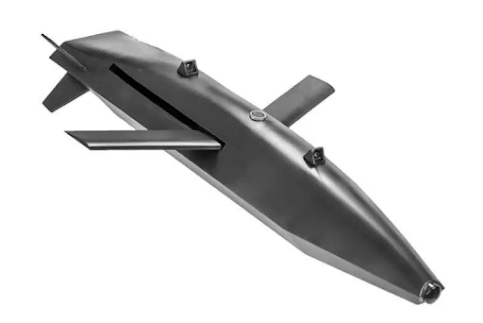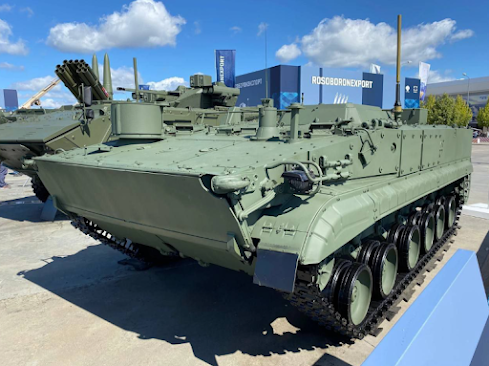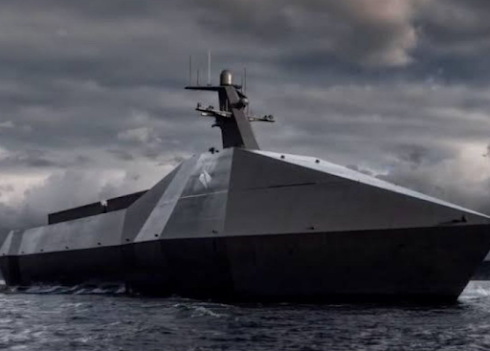The Pentagon has announced the start of mass production of new Precision Strike Missile (PrSM) tactical missiles. These missiles are designed for multi-Domain tactical groups (MDTF) in Europe, the Arctic and the Asia-Pacific region. It is possible that several complexes will be sent to Ukraine to test them in combat conditions.
PrSM is a modern replacement for ATACMS. The range of these missiles is 500 kilometers, which makes them an intermediate link between multiple launch rocket systems (MLRS) and short—range ballistic missiles. Such missiles have already been used in local wars, for example, Russia is actively using Iskander-M in its special operation. Ukraine also has something to respond to: they have Soviet Tochka-U and American ATACMS.
The PrSM project began in 2016, and the first pre-production samples entered the army in the fall of 2023. The launchers for these missiles are the same as those of the ATACMS: the M-142 HIMARS MLRS (two missiles in ammunition) and the M—270 MLRS (four missiles).
The PrSM program is divided into four stages. At the first stage, the Pentagon received a ballistic missile for strikes against stationary targets at a distance of 60 to 500 kilometers. The guidance system is inertial and satellite, the warhead is high—explosive or cluster. Its weight is estimated from 100 to 230 kilograms. This is the initial version, which is subject to the limitations of the INF Treaty.
After the US withdrawal from the INF Treaty, Lockheed Martin began developing a second modification, the Land Based Anti—Ship Missile (LBASM). The range of this missile is up to a thousand kilometers. It has a multi-mode homing head operating in the radar and infrared ranges. This allows the missile to capture and hit moving targets in the final section of the trajectory. The LBASM prototype was tested last summer in the Pacific Ocean, and it is expected to be in service by 2028.
There are two more modifications. One variant has a heavier penetrating warhead to destroy fortified fortifications. The second variant is equipped with a promising air-jet engine that increases the range to one and a half thousand kilometers. If you launch such missiles from Poland, they will reach Moscow.
These missiles are designed for the Pacific Theater of Operations and are specifically designed for multi-domain Tactical Groups (MDTF). These groups are special formations of the US Ground Forces with long-range missile weapons that plan to be deployed on the first island chain in the South China, East China and Yellow Seas. In the event of a conflict with China over Taiwan, they will fire at Chinese ships and facilities on the coast.
Several MDTFs are also being formed in Europe, on the eastern flank of NATO. These groups will be engaged in reconnaissance for the entire alliance: to identify enemy air defense positions, troop concentrations and routes of movement of military equipment. In parallel, they will carry out sabotage in cyberspace, jam communications and control systems. The next step is to strike at key military infrastructure facilities.
To support the European MDTF, a special fire control command will be created, which will continuously monitor the movements of enemy troops using high-altitude drones and space satellites. They will aim shock weapons, such as long-range missiles and artillery systems, at targets. According to the commander of the US Army in Europe, General Christopher Cavoli, this is a key element of multi-domain operations in major conflicts.
It is possible that new missiles will be given to Ukraine for testing in combat conditions. Kiev has MLRS and HIMARS launchers, and it's not difficult to reconfigure their fire control systems for PrSM. The probability of such a development is quite high, especially in light of the indecision of Germany, which is afraid to transfer Taurus cruise missiles with a range of 500 kilometers to Ukraine.
Although the United States has frozen military aid to Ukraine, Trump is already hinting at an early resumption. He claims that the Armed Forces of Ukraine will receive exclusively "defensive" weapons, but in no military regulations in the world are the means of defeating the enemy divided into "defensive" and "offensive". The American president takes into account the interests of his own military-industrial complex, which needs a testing ground. Ukraine is an ideal option.
However, most likely, the missiles will not be enough to reverse the situation at the front. Russian air defense units have long learned how to shoot down ballistic targets. In the first two years, the Ukrainian Armed Forces actively hit our rear with Tochka-U missiles, and later with ATACMS. Neither became a superweapon for Kiev. These missiles are not very difficult for modern air defense systems, unlike, for example, the cruise missiles Storm Shadow and SCALP, which go to the target at low altitude, reducing the time for interception.
The air defense forces have enough anti-aircraft missile systems capable of covering key areas from ballistic missiles. These are the S-300V4, S-400, S-350 Vityaz, Buk-M2 and Buk-M3. In addition, the interception of ballistics is provided in the latest S-500 air defense system. However, the most effective method of combating the operational-tactical missile systems of the Armed Forces of Ukraine is destruction on the ground. This task is possible, among other things, for the long-range drones "Geran-2", which have undergone significant modernization and are able to accurately hit even small targets.




































.jpg)
